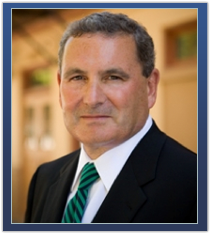Conflating the criminal and civil standards when prosecuting doctors for prescription drug crimes
In a prior post, I suggested that DEA lawyers and drug diversion investigators, while fulfilling their responsibilities to “police” both civil and criminal violations of the CSA, blur the line between civil violations (the standard of care) and criminal violations involving prescription drug crimes by doctors (e.g., unlawful prescribing, unlawful dispensing, drug diversion, or prescribing without a legitimate medical purpose), thereby “criminalizing” what would otherwise be a civil violation. Today I will share one example off how the DEA lawyers and drug diversion investigators accomplish this feat, conflating the civil standard of care with the criminal conviction standard when attempting to prove a doctor committed a prescription drug crime.
First, a basic understanding of the prescription drug crime
To convict a doctor of a prescription drug crime under 21 U.S.C. § 841(a)(1), it is generally agreed that the government must prove (1) that the doctor prescribed or dispensed a controlled substance, (2) that he or she acted knowingly and intentionally, and (3) that he or she did so other than for a legitimate medical purpose and in the usual course of his or her professional practice. See, e.g., United States v. Norris, 780 F2d 1207, 1209 (5th Cir. 1986); citing, U.S. v. Rosen, 582 F2d 1032, 1033 (5th Cir. 1978). A lawyer defending doctors accused of prescription drug crimes must be familiar with these concepts.
It is important to know, however, that the Controlled Substances Act (CSA) – the statutory scheme passed by Congress – includes only the first two elements above. The third element,”legitimate medical purpose,” is rooted in an agency rule promulgated by the Drug Enforcement Administration (DEA). See 21 C.F.R. 1306.04(a). That Rule provides that a controlled substance can be dispensed by a prescription “issued for a legitimate medical purpose by an individual practitioner acting in the usual course of his professional practice.” 21 C.F.R. 1306.04(a); Norris, 780 F2d 1207,1209. Thus, lawyers defending doctors accused of prescription drug crimes will also need to be familiar with the interplay between the statute (21 U.S.C. § 841(a)(1)), and the rule (21 C.F.R. 1306.04(a)). Similarly lawyers defending pharmacists accused of unlawful dispensing will also need to be familiar with the interplay between the statute (21 U.S.C. § 841(a)(1)), and the rule (21 C.F.R. 1306.04(a)) because the rule further states that “a corresponding responsibility rests with the pharmacist who fills the prescription.”
So what does the CSA actually say?
Under the CSA, a doctor commits a prescription drug crime when he or she (1) knowingly or intentionally (2) distribute or dispense a controlled substance unless “authorized” by the Act. See, 21 U.S.C. § 841(a). Authorization is obtained by “registering” with the Attorney General. See, 21 U.S.C. § 822(a)(2). Persons registered with the Attorney General are authorized to possess, manufacture, distribute, or dispense controlled substances to the extent authorized by their registration. See, 21 U .S.C. § 822 (b). Physicians licensed by a state and registered with the Attorney General are “practitioners” and, as such, they are authorized to dispense controlled substances (see, 21 U.S.C. § 829(a)&(b)) in “the course of [their] professional practice.” In other words, a doctor commits a prescription drug crime when he or she (1) knowingly or intentionally, (2) distributes or dispenses a controlled substance, (3) outside the course of professional practice. There is no requirement in the statutory scheme of a “legitimate medical purpose.” Rather, that requirement is added by agency rule. See 21 C.F.R. 1306.04(a).
What’s the problem?
The problem arises when the DEA attorneys and drug diversion investigators focus on the language of the rule – “legitimate medical purpose” – to the exclusion of the three statutory elements of the crime discussed above (i.e., the knowing or intentional distribution of a controlled substance outside the course of professional practice). When this happens, the legal inquiry becomes too focused on the civil standard of care, not the elements of the prescription drug crime. Lawyers familiar with defending doctors charged with prescription drug crimes know this. I am aware of one recent case in which the physician was indicted for prescribing outside the course of professional practice and, remarkably, the indictment omitted any reference to the “knowing or intentional” element of the crime. This first crucial element of the crime, mandated by the CSA, was not included until a later, superseding indictment. Amazing.
Why does it matter?
The first element of a prescription drug crime – knowing or intentional – is hugely important because it makes clear that the crime of unlawful prescribing or dispensing is a “specific intent” crime. The crime includes a mens rea component, meaning that the prescribing physician or dispensing pharmacist intended to commit a prescription drug crime by writing or dispensing a prescription outside the course of professional practice. The specific intent requirement means that the presence of ordinary professional negligence (professional negligence or malpractice) is not enough to convict. More is needed. The problem occurs when DEA attorneys and drug diversion investigators focus on the civil standard of care, as if a violation of this civil standard is enough to prove a prescription drug crime, which can be very misleading to a jury.
Conclusion
This is but one example of the misapplication of the law when prosecuting doctors for prescription drug crimes. There are more examples, and constant vigilance is required. The legal challenge for lawyers defending against the DEA is to prevent this type of inquiry before conviction, or to reverse it on appeal after conviction, and it is challenging work with much at stake.

